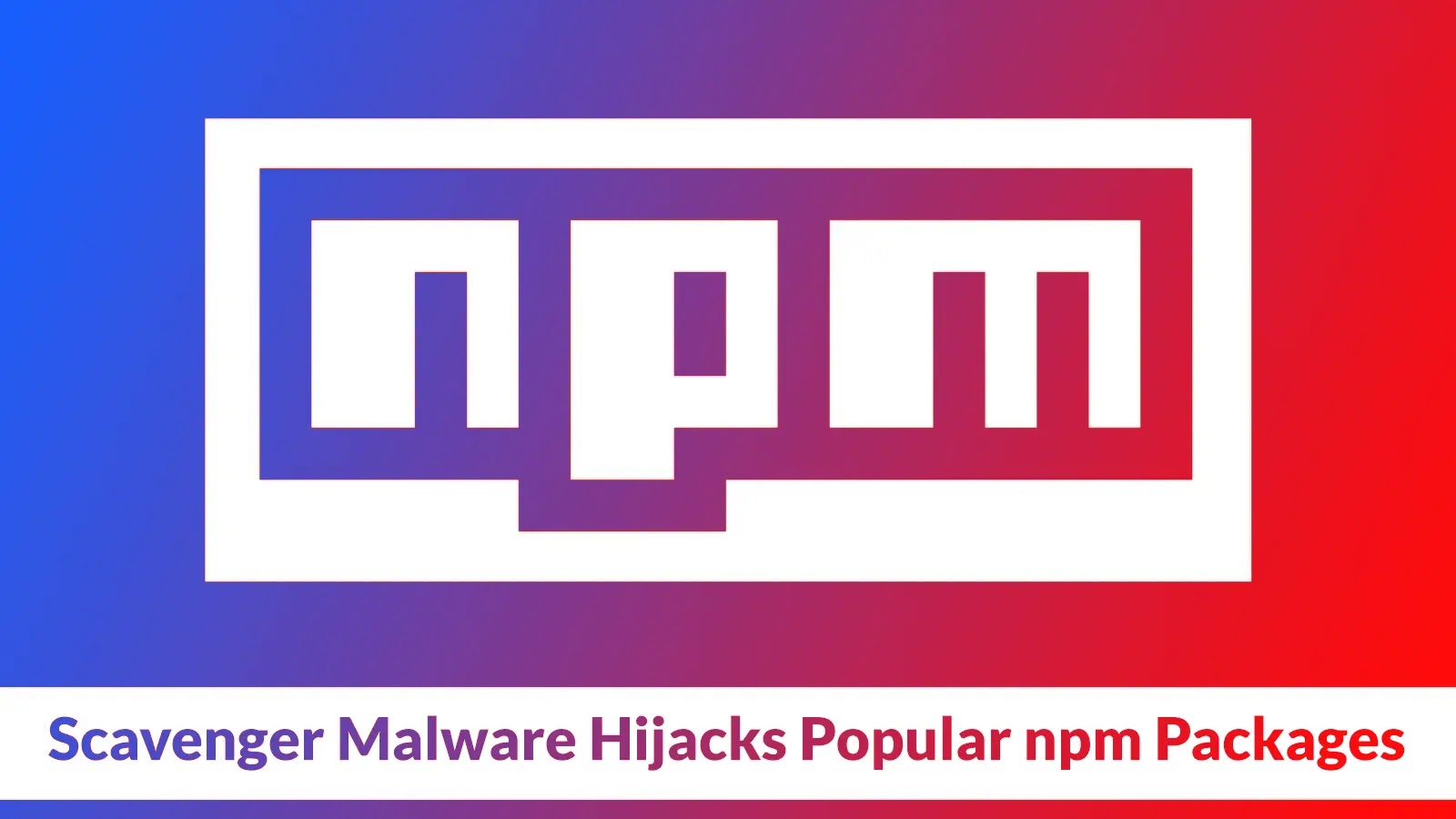
Scavenger Malware Hijacks Popular npm Packages to Attack Developers
The npm Supply Chain Under Attack: Scavenger Malware Strikes Popular JavaScript Packages
The digital landscape for software development continuously faces evolving threats, and supply chain attacks remain a top concern. On Friday, July 18th, 2025, JavaScript developers witnessed a sophisticated new entry into this dangerous arena: the “Scavenger” malware. This targeted campaign compromised multiple popular npm packages, marking a significant threat to the security and integrity of development environments worldwide.
This incident underscores the critical need for robust security practices within the developer ecosystem. When foundational tools are compromised, the ripple effect can be catastrophic, potentially introducing malicious code into countless projects and applications.
Understanding the Scavenger Malware Campaign
The recent security breach involved cybercriminals injecting the newly identified Scavenger malware into legitimate and widely-used npm packages. This type of attack, where malicious code is surreptitiously introduced into software components that developers rely upon, is notoriously difficult to detect and poses a severe risk to the entire software supply chain.
The primary targets in this campaign included eslint-config-prettier, a foundational package for consistent code formatting, and several other essential development tools such as eslint-plugin-prettier, snyckit, @pkgr/core, and napi-postinstall. The compromise of such high-profile packages suggests a well-planned operation aimed at maximizing reach within the developer community.
While specific details regarding the exploit method used to compromise these npm accounts are still emerging, the outcome is clear: developers who installed or updated these packages during the compromise window may have inadvertently introduced the Scavenger malware into their systems.
Impact on Developers and Organizations
The direct impact of the Scavenger malware can be multifaceted and severe:
- Data Exfiltration: Malicious npm packages can be designed to steal sensitive information, including API keys, source code, credentials, and configuration files from a developer’s machine or build environment.
- Backdoor Installation: The malware could establish persistent backdoors, allowing attackers continued access to compromised systems or networks.
- Supply Chain Contamination: If a compromised package is used in a project, the malware could propagate further downstream into built applications, affecting end-users or customers.
- Intellectual Property Theft: Developers’ proprietary code and project secrets are at risk of being exfiltrated.
- Reputational Damage: For companies whose applications inadvertently ship with compromised dependencies, the damage to reputation and user trust can be significant.
The incident highlights a critical vulnerability in the widespread reliance on third-party libraries and packages, emphasizing that even seemingly innocuous development tools can become vectors for sophisticated attacks.
Remediation Actions for Developers and Organizations
Given the gravity of the Scavenger malware attack, immediate action is crucial for all JavaScript developers and organizations utilizing npm packages.
- Audit Dependencies: Immediately review your project’s
package-lock.jsonoryarn.lockfiles for any versions of the compromised packages (eslint-config-prettier,eslint-plugin-prettier,snyckit,@pkgr/core,napi-postinstall) that were installed or updated on or after July 18th, 2025. - Isolate and Rebuild: If compromised versions are identified, consider isolating affected development environments. Perform a clean rebuild of your projects, ensuring that only trusted versions of dependencies are fetched.
- Dependency Pinning: Strengthen your dependency management by pinning exact versions of all packages in your
package.jsonto prevent accidental updates to potentially malicious future versions. - Endpoint Scans: Conduct comprehensive endpoint detection and response (EDR) scans on all developer workstations and build servers that may have interacted with the compromised packages.
- Credential Rotation: As a precautionary measure, rotate all API keys, repository credentials, and any other sensitive tokens used within your development environments, especially those accessible from machines that installed the compromised packages.
- Implement Software Supply Chain Security Tools: Integrate tools designed to monitor and secure your software supply chain (SCS).
- Educate Developers: Reiterate the importance of verifying package authenticity, being cautious about new or less popular packages, and reporting suspicious activity.
Tools for Detection and Mitigation
Leveraging specialized tools is essential for effectively identifying and mitigating supply chain risks.
| Tool Name | Purpose | Link |
|---|---|---|
| Snyk Open Source | Dependency vulnerability scanning and license compliance. | https://snyk.io/product/open-source-security/ |
| OWASP Dependency-Check | Analyzes project dependencies and identifies reported vulnerabilities. | https://owasp.org/www-project-dependency-check/ |
| npm Audit | Built-in npm command to audit dependencies for known vulnerabilities. | https://docs.npmjs.com/cli/v8/commands/npm-audit |
| Mend Bolt (formerly WhiteSource Bolt) | Automated open-source security and license compliance. | https://www.mend.io/free-developer-tools/bolt/ |
| JFrog Xray | Universal software supply chain security and compliance platform. | https://jfrog.com/xray/ |
Looking Ahead: Strengthening Software Supply Chain Security
The Scavenger malware incident serves as a stark reminder of the persistent and evolving threats targeting software supply chains. Relying solely on the trustworthiness of public package registries is no longer sufficient. Developers and organizations must adopt a proactive, multi-layered approach to security.
This includes rigorous vetting of third-party dependencies, implementing automated security scanning in CI/CD pipelines, enforcing strong access controls for package repository accounts, and actively monitoring for anomalies. The continuous vigilance and collaboration within the cybersecurity community will be crucial in defending against future sophisticated attacks of this nature.





